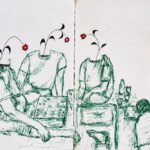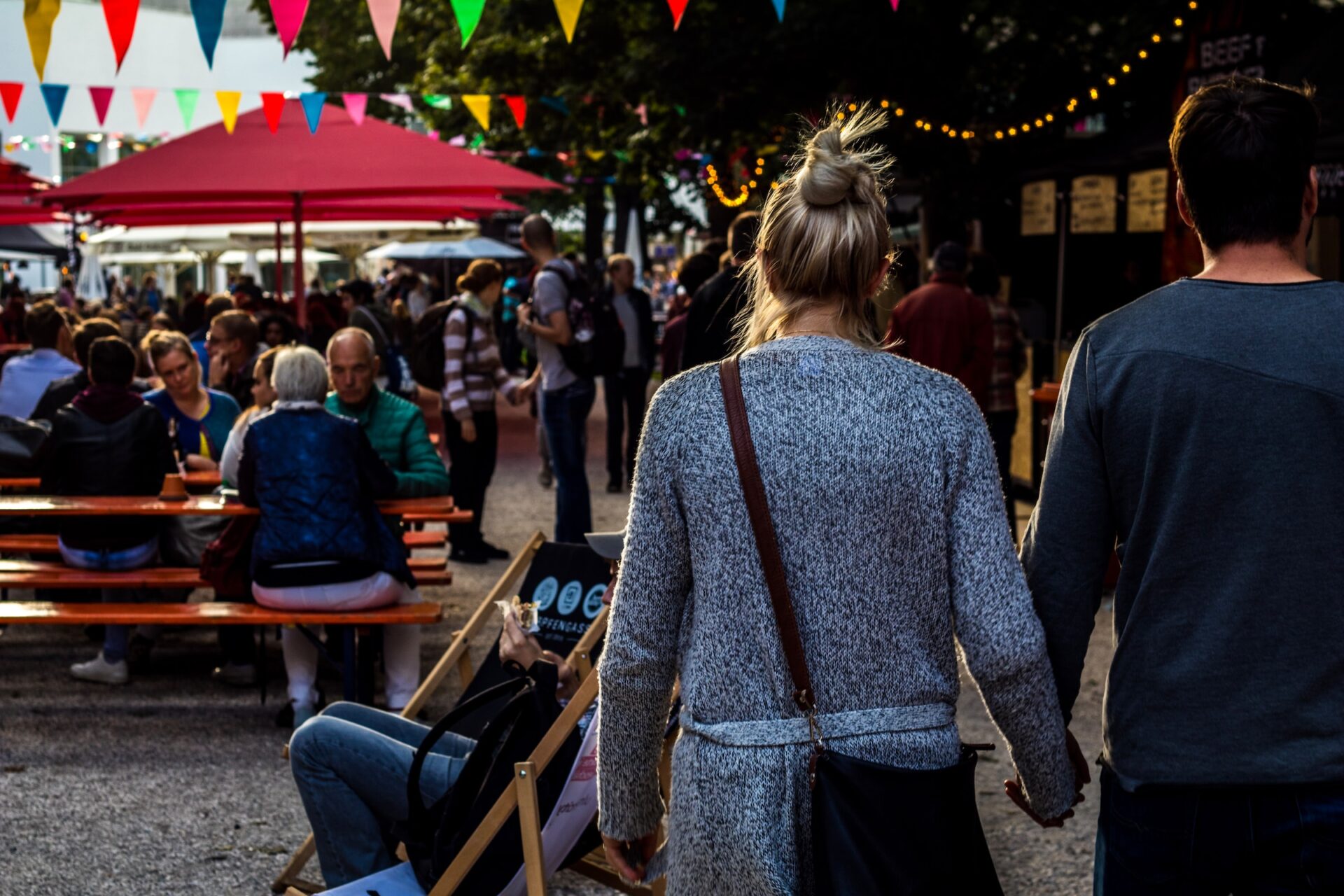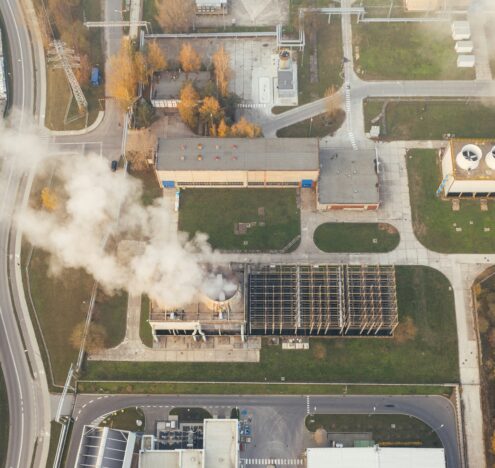In 2015, Syrians fled their country as a brutal civil war unleashed the largest refugee crisis in Europe since World War II. Over one and a half million Syrians wound up in Lebanon and close to four million in Turkey, searching for safety. Others made it to Western Europe. These people needed more than humanitarian assistance. They needed work. Returning home soon was not an option.
It was through the lens of the Syrian refugee crisis that I first saw the power of food in times of war and conflict. Food is a portable part of a culture. It can easily be transferred to other places. It is also a source of comfort. A familiar taste can evoke memories of home when you cannot return. By sharing a meal with strangers, you can also build trust. This explains why the food sector has been a good place for those who no longer have a country to find a way to survive.
This year’s observance of World Refugee Day on June 20, 2023 focuses on “hope away from home.” And that is why I thought about the Syrian refugee crisis and all the other ones that have followed — Sudan, Afghanistan, Venezuela, and most recently, Ukraine. Since 2015, the rise of refugee food programs is yet another way that host countries are managing to engage the world’s most vulnerable, but especially women and children, on a new journey to self-sufficiency.
The world’s population is on the move, and the pace of movement is not abating. Today there are more than 37 million refugees, 2.3% of the world’s population, who live outside the borders of their nationality. According to the UN High Commissioner for Refugees, the UN agency overseeing the protection of these stateless people, there are almost 10 million more refugees as of mid-2022 than a decade ago.
The Burdens of the Refugee
Who is a refugee versus a migrant, however, is the more challenging question of our day. Today people are moving away from their homelands not only because of wars but because a changing climate has wiped out their livelihood. Economic and food insecurity are powerful drivers of migration.
There is a legal definition of who is a refugee. The core principle of the 1951 Convention Relating to the Status of Refugees is non-refoulement, which asserts that a refugee should not be returned to a country where they face serious threats to their life or freedom. To be a refugee under international law, the person must have a “well-founded fear of being persecuted for reasons of race, religion, nationality, membership of a particular social group or political opinion, is outside the country of his nationality and is unable or, owing to such fear, is unwilling to avail himself of the protection of that country; or who, not having a nationality and being outside the country of his former habitual residence as a result of such events, is unable or, owing to such fear, is unwilling to return to it.”
Local solutions have always involved job creation and integration into the community. That is why using food as a tool for social integration has become a current way for many intergovernmental organizations, the UN, and local nongovernmental groups to support refugees trying to build a future when the road home is not an option.
Only refugees get protection based on the obligations that convention signatories must offer for those who wind up inside another country. But a problem arises today because beyond the wars and ongoing conflicts, the 1951 Convention Relating to the Status of Refugees and the 1967 Protocol not only requires protection of people on the move; it requires the host country to enable people to recover and contribute to a host country by giving them the right to work.
Here is where it gets messy. In the 74 years since the convention was ratified, new types of threats, from people fleeing rural areas because of drought and climate change to the loss of economic opportunities arising from conflict, have created a need to expand the definition to include those who are fleeing for economic reasons. Most people on the move today are trying to escape poverty and violence. All are seeking a better life. Whether they are refugees is determined by the asylum process. In recent years, especially with caravans of people coming across the US-Mexican border, the burden is on the migrant to prove that he or she is a refugee under the terms of the convention. Without refugee status, migrants lack the protections guaranteed by the legal convention. Yet, millions of people are displaced within other countries or are on the move trying to find a way to survive in what will be a prolonged process.
Refugees and migrants present a problem that begs for responses that go far beyond humanitarian assistance. These people’s plight is also a major development challenge, as those who leave often do not return home. Being without a country is a long-term problem. It is not a coincidence that this year’s World Development Report 2023 chose to focus on migrants and refugees. The report explores these groups’ economic challenges and potential remedies to support host countries where resources are often scarce or non-existent. Moreover, this year’s report emphasizes how policies for refugees need to be sustainable because these are long-term situations.
Most refugees are living in countries with challenging economic conditions. Before the Russian invasion of Ukraine in Feb. 22, 2022, the five countries hosting refugees were Turkey, Colombia, Uganda, Pakistan, and Germany. Poland was added to this list when more than eight million Ukrainians crossed the border. And just this spring, a civil war in Sudan forced thousands of residents into Egypt and to European countries as the fighting continues in that North African country. These situations will require new ways to manage what remains an ongoing global crisis of movement arising from conflicts and climate change. Half of the world’s refugees are hosted in middle-income countries, adding additional burdens to the hosting states.
While each host country is trying to manage what remains a long-term problem, these situations beg for some medium and long-term solutions. Local solutions have always involved job creation and integration into the community. That is why using food as a tool for social integration has become a current way for many intergovernmental organizations, the UN, and local nongovernmental groups to support refugees trying to build a future when the road home is not an option.
Refugee Chefs Are Changing the Narrative
Turkey, which has hosted the largest number of Syrian refugees, has been fortunate to receive support for using the kitchen as a local solution to employment. The LIFE Project in Istanbul and Mersin, which brought together Turkish and Syrian women to create training in culinary entrepreneurship between 2017-2019, found that breaking down barriers between two groups that otherwise distrusted each other was achieved by facilitating conversations about foods that both communities enjoyed. Each group discovered that their cuisines were similar and had common roots in the Ottoman Empire and Persia.
Chef Ebru Baybara Demir was determined to help women refugees in her city of Mardin, in southeast Turkey. This award-winning chef opened the Mesopotamia Cooking School in 2018 to meet the growing needs of Syrian and Turkish women in need of a livelihood and hope. Ebru used gastronomy to build confidence and skills that many of her students can translate into jobs and income. Especially in Turkey, where the economic strains of the war in Syria were creating hostile feelings toward refugees, the training program was yet another way to reduce tensions by demonstrating the capabilities of her students to become economically independent.
When Syrian refugees began pouring into Europe in 2015, there was much discussion about the challenges many countries would face in accepting those fleeing from a horrific war launched by President Bashar Assad against his people. The issue of integration was even more challenging than the obvious questions of where to house so many newcomers. Without knowing the local language, what someone could do to earn a living was limited. Food became the answer.
In France, two young entrepreneurs started the Refugee Food Festival. It plucked Syrians and others migrating there, who had culinary skills, to use their cuisines at a festival that would endure to this day. Louis Jacquot and Sebastian Prunier, just 29 years old, saw that they could help in a small way to change the narrative about refugees in France. Rather than perpetuate the idea of refugees living off the state as a burden to society, they created a counter-narrative by extending an opportunity in the food space to anyone willing to work. It combined the notion of gastrodiplomacy, or citizens using food to create better cultural understanding, with the growing trend known as social gastronomy, using food as a tool of social impact in frequently marginalized communities.
Every year since 2015, there are refugee food festivals in France on World Refugee Day (June 20). Events use local restaurants in 10 French cities: Paris, Lille, Lyon, Marseille, Bordeaux, Strasbourg, Rennes, Nantes, Dijon, and Montpellier. In Paris, the program, Food Sweet Food, partnered with UNHCR to highlight the talent, and culinary skills of those who had arrived in France. This year’s festival will take place in several French cities: Nice. Paris, Bordeaux, Dijon, Genève, Lille, Lyon, Marseille, Montpellier, Nantes, Rennes, Strasbourg from June 22-25, 2023.
A similar example comes from Germany, the country in Western Europe that has taken in more refugees than any other. Founded in Berlin in 2013, Über den Tellerand uses the power of food to create opportunities for people of diverse cultures to meet and get to know each other. Through their model, they bring together people as equals, creating opportunities for personal exchange and friendship between those with refugee experience and those without. The team works to advance and spread its vision of an open and tolerant society to enable intercultural coexistence across Germany and Europe for the long term.
A more recent example of gastrodiplomacy as a solution for refugee employment is the Dari Darpur campaign in Malaysia, which started in 2022. Journalist Elroi Lee and a social impact production company filmed seven videos using food to tell the stories of migrants and refugees, from Cambodians, Yemeni, Tamils, and Rohingyas. “We need shared stories that show migrants and refugees have a place in the Malaysian narratives.” The UNHCR, which sponsored the program, underscores the importance of food to overcome differences while promoting human rights.
American cities have also experienced similar types of food integration. Indianapolis, Indiana (large Burmese populations), Lincoln, Nebraska (Vietnamese, Yazidi, Karen, and Mexicans, and Ukrainians in Charlotte, North Carolina, are three examples of cities that have embraced foreign-born residents in ways that achieve a positive image for those who were once threatened by the prospect of waves of immigrants taking jobs and overtaking local workers. Food establishments have been the main source of new businesses, but in many small towns throughout the Midwest, it is immigrants who have added value to places that were once on the decline but are now growing centers of commerce.
In New Haven, Connecticut, Sanctuary Kitchen provides another way for communities to come together around refugee economic needs. New Haven’s CitySeed is a project that combines food, cultural exchange, and entrepreneurial training to provide refugee women with economic opportunities and assist their integration into the community. It remains a safe space for women while also providing an income for those who work there. A similar effort in the city of Baltimore, Mera Kitchen Collective, operates a similar program, using a restaurant’s kitchen in the morning to prepare meals they will sell online.
Eat Off Beat, another New York-based effort to promote refugee chefs, was started by a Lebanese sister and brother, Manal and Wassim Khai, who originally wanted to create a hummus company. What they created, however, has been a more enduring contribution to the city’s diverse immigrant cuisine. With the help of the International Rescue Committee, they were able to bring together talented immigrant chefs who work with their head chef in a leased commercial kitchen. There they prepare catered and carry-out meals.
Kerry Brodie started Emma’s Torch in Brooklyn, New York, in 2016 with a specific mission to teach immigrants and refugees new culinary skills so they could lead a better life in the United States. The restaurant and cooking school is named after Emma Lazarus whose 1883 poem, “The New Colossus” includes the famous line, “Give me your tired and your poor, your huddled masses yearning to breathe free,” is emblazoned on the base of the Statue of Liberty. Like others of its genre, it uses the power of the kitchen to give a new life to our society’s most vulnerable people.
Food is a Tool of and for Compassion
Countries receiving refugees will need to demonstrate compassion by providing for the immediate needs of victims of war and violence. Those fleeing their homelands will need help overcoming the immediate trauma of being uprooted and a plan to help establish some means of survival thereafter. Such challenges are overwhelming host countries and the international development community. Moreover, balancing the immediate needs of those on the move with the responsibilities of international humanitarian law to protect refugees today is a challenging task. Sadly, the scope of the problem is bigger than any one country or organization can manage alone.
The UN High Commissioner for Refugees Fillipo Grandi, on announcing this year’s observance of World Refugee Day, remarked that we must feel compassion for all of those who have been forced from their homes, who are searching for a better life and are thinking of ways to start over in a new land. Given the state geopolitics — wars, ongoing conflicts, and now the impact of climate change — the commissioner went on to note that deterring the march of humanity across borders is not much of a consideration, given the horrific conditions that have created the departure in the first place.
Without an end in sight, recognizing the plight of refugees and migrants is now a full-blown development problem. Medium and long-term solutions to employment and integration must involve many types of interventions. Projects involving food are not only a means of survival but also a valuable tool for economic integration.





















